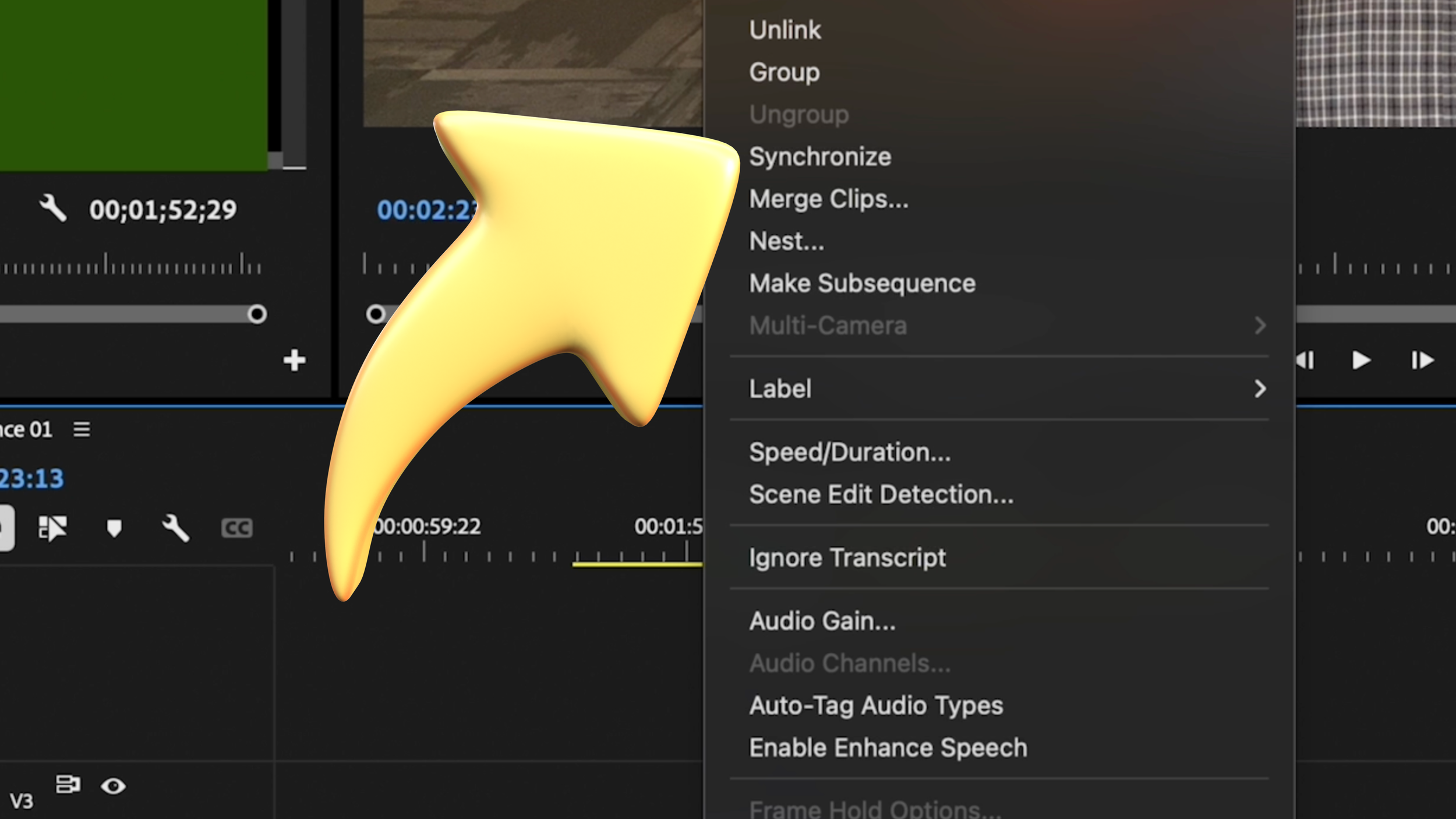7 Icebreakers for Getting to Know Your Video/Film Students
As teachers, we understand the significance of creating a positive and inclusive learning environment for our students. Especially in video/film courses, where collaboration and teamwork are paramount, breaking down barriers and fostering connections among students is essential for a successful learning journey.
That’s why I like to use some icebreakers during those first few, non-productive, days of school. These seven icebreakers are tailored specifically for video/film students. From movie-themed charades to sharing memorable cinematic experiences, these icebreakers are not only fun and interactive but also instrumental in cultivating an atmosphere of trust and openness.
Whether you're a seasoned educator or a new film instructor, these icebreakers are sure to set the stage for an exciting and collaborative cinematic voyage. So, let's dive in and discover how these creative activities can pave the way for students to connect, communicate, and unleash their creativity in the world of video/film production.
At the end of the article, I actually have a link to a Kahoot that I created last year to tap into pop culture and engage my students. It was a huge hit, so keep reading.
Two Truths and a Lie
Two Truths and a Lie is a popular icebreaker game that can be played in various social settings, including classrooms, team-building events, or parties. It's an engaging way for participants to get to know each other better while having fun. The game is straightforward and allows individuals to reveal interesting facts about themselves, but with a twist of deception.
Why it's a good icebreaker:
1. Fun and Interactive: Two Truths and a Lie encourages active participation and generates excitement among participants.
2. Getting to Know Each Other: It helps break the ice and enables individuals to learn intriguing facts about others in a lighthearted manner.
3. Building Trust: By sharing personal information, it fosters an environment of trust and openness.
4. Encouraging Communication: It stimulates conversation and sets a positive tone for further interactions.
How to play Two Truths and a Lie:
1. Explain the Rules: Gather all participants and explain the game's concept. Let them know that each person will take turns sharing three statements about themselves: two of these statements must be true, and one should be false (the lie).
2. Example Round: Start by demonstrating an example round to make sure everyone understands the rules. Share three statements about yourself, making sure to mix up the true and false statements. For instance: "I have traveled to six different countries, I can play the piano, and I have a pet parrot." The group must then guess which statement is the lie.
3. Participants' Turns: Now, let each participant take their turn. They should come up with three statements, mixing up true and false facts, without revealing which one is the lie.
4. Guessing the Lie: After each person has shared their three statements, the rest of the group takes turns guessing which statement they believe is the lie. Each player should explain why they made their guess to keep the game engaging.
5. Revealing the Lie: Once everyone has made their guesses, the person who shared the statements should reveal which one was the lie. They can share a brief story or explanation behind each statement if desired.
6. Next Player's Turn: Continue the game by moving to the next participant, and repeat steps 3 to 5 until everyone has had a chance to share.
7. Enjoy and Engage: Throughout the game, encourage a positive and inclusive atmosphere. Applaud creativity and share some laughs as people try to guess the truths and lies.
8. Optional Variation: To add a twist, you can keep score by giving points to players who successfully guess the lie. The person with the most points at the end can receive a small prize or recognition.
Remember to be mindful of sensitive topics and ensure that the atmosphere remains light-hearted and non-intrusive. Two Truths and a Lie is meant to be a fun way to connect with others and build rapport in a casual setting.
Charades gets students up and moving
Movie Character Charades
Movie Character Charades is a fun and entertaining game that involves acting out famous movie characters without using any words or sounds. It's a great icebreaker and party game that can spark creativity, laughter, and teamwork among participants. Players get the chance to showcase their acting skills while guessing the movie characters their friends are portraying.
Why it's a good icebreaker:
1. Interactive and Energetic: Movie Character Charades gets everyone involved, and the physical acting adds energy to the game.
2. Familiarity and Popularity: Participants can bond over their favorite movies and characters, making it easier to connect with each other.
3. Non-Competitive Fun: Unlike competitive games, charades fosters a cooperative atmosphere where players work together to guess the characters correctly.
4. Breaking Barriers: It helps break social barriers and encourages shy individuals to participate in a lighthearted manner.
How to play Movie Character Charades:
1. Prepare Character Cards: Before the game starts, prepare a list of famous movie characters on separate cards or pieces of paper. Ensure that the characters are well-known and recognizable to most participants. Fold or place the cards face-down in a container.
2. Form Teams (Optional): If you have a large group, consider dividing players into teams. This adds an element of collaboration and support among team members.
3. Explain the Rules: Gather the participants and explain the rules of the game. Let them know that one player will act out a movie character silently, without speaking or making any sounds, while the rest of the group tries to guess the character.
4. Start the Game: Choose the first actor and have them come forward. They randomly select a character card from the container without revealing it to anyone.
5. Acting Out the Character: The actor then begins to act out the movie character using gestures, facial expressions, and body language. They should try to imitate the character's distinct traits or memorable scenes from the movie.
6. Guessing the Character: The other players have a limited time (e.g., one minute) to observe the actor's performance and collectively try to guess the movie character. They can shout out their guesses during the time limit.
7. Correct Guess and Next Player: If the group correctly guesses the character within the time limit, the actor can set the card aside, and the next player gets a turn to act out a character.
8. Incorrect Guess: If the group fails to guess the character within the time limit, the actor can reveal the character's identity, and the card goes back into the container for future rounds.
9. Continue Playing: Repeat steps 4 to 8 with different players taking turns to act out movie characters until everyone has had a chance to participate.
10. Team Scoring (Optional): If playing in teams, you can keep score by awarding points to teams for every correctly guessed character. The team with the most points at the end wins the game.
11. Enjoy and Have Fun: Encourage players to be expressive and imaginative while acting, and celebrate the joy of guessing the characters correctly.
Movie Character Charades is a versatile game that can be adapted to different themes or variations based on the interests and preferences of the participants. It's a fantastic way to bring movie enthusiasts together and create lasting memories of shared laughter and enjoyment.
Film Genre Mixer
Film Genre Mixer is an engaging and creative game that combines various movie genres to invent unique and entertaining film concepts. Players collaboratively mix different genres to form imaginative movie ideas, leading to a fun and often hilarious experience. This game encourages participants to think outside the box and come up with unconventional combinations that can lead to exciting storytelling possibilities.
Why it's a good icebreaker:
1. Promotes Creativity: Film Genre Mixer encourages participants to think creatively and inventively, fostering a positive and open-minded atmosphere.
2. Collaborative Fun: It's a group activity that promotes teamwork and shared laughter as players brainstorm ideas together.
3. Lightens the Mood: This game adds an element of humor and light-heartedness to any social gathering.
4. Inclusive and Interactive: It allows everyone to contribute, regardless of age or background, and creates opportunities for diverse perspectives.
How to play Film Genre Mixer:
1. Prepare Genre Cards: Before starting the game, prepare a set of genre cards representing various movie genres (e.g., sci-fi, romance, action, horror, comedy, fantasy, drama). You can create these cards on paper or use an online random genre generator.
2. Form a Circle or Groups: Gather all participants in a circle or divide them into smaller groups, depending on the size of the gathering.
3. Explain the Rules: Briefly explain the rules of the game. Each player or group will take turns drawing a genre card from the deck and then, as a team, come up with a movie concept that combines the drawn genre with the one chosen by the previous player or group.
4. Start the Game: Begin with one player or group drawing the first genre card from the deck. For example, if they draw "sci-fi," that will be their starting genre.
5. Mixing Genres: The next player or group will draw a genre card and announce it. They must then combine it with the previous genre to create a movie concept that blends the two genres. For instance, if the first genre was "sci-fi" and the second genre drawn is "romance," the players could brainstorm ideas for a "sci-fi romance" movie.
6. Brainstorm Movie Concepts: Encourage creativity and allow time for participants to discuss and brainstorm ideas for the combined movie concept. The goal is to come up with an engaging and amusing storyline that involves elements from both genres.
7. Share Movie Concept: Once the team has developed their movie concept, they present it to the rest of the group. This can be done through a short pitch, a synopsis, or even acting out a brief scene from the imagined movie.
8. Next Player/Group's Turn: After presenting their movie concept, the next player or group in the circle takes their turn. They draw a genre card and combine it with the previous concept to create a new movie idea.
9. Repeat and Enjoy: Continue the game, rotating through all players or groups, and enjoy the process of discovering unique and imaginative movie concepts.
10. Optional Variation: To add an extra layer of challenge, you can set a time limit for each team to come up with their movie concept, making the brainstorming process more exciting.
Remember to maintain a positive and encouraging environment throughout the game. Emphasize that there are no wrong answers, and the goal is to have fun while creating wild and entertaining movie ideas. Film Genre Mixer is an excellent way to stimulate creativity and bond over the joy of inventing wacky and wonderful stories together.
⇒ Sci-fi and romance mixer example:
Title: "Galactic Love Connection"
Plot Summary:
In the distant future, on the planet Zorblon-7, a quirky and eccentric scientist named Dr. Zapp has just invented a wacky contraption called the "Cosmic Cupid." This ingenious device uses intergalactic matchmaking algorithms to find the perfect love match for anyone in the universe.
Unbeknownst to Dr. Zapp, his Cosmic Cupid machine malfunctions during a thunderstorm, causing it to accidentally zap a grumpy alien space captain named Xalon and a brilliant astrophysicist named Luna simultaneously. The Cosmic Cupid's beam goes haywire, intertwining their destinies in a cosmic love connection!
From the moment they wake up, Xalon and Luna find themselves inexplicably drawn to each other, but they can't understand why. Luna's logical mind clashes with Xalon's rugged, no-nonsense demeanor, creating comedic misunderstandings and hilarious encounters as they embark on a space adventure together.
As they travel through the galaxy in a quirky spaceship powered by Luna's scientific knowledge and Xalon's improvised repairs, they encounter bizarre alien civilizations and awkwardly navigate the ups and downs of their newfound romantic connection. Amidst asteroid dodging and gravity-defying dance-offs, they start to realize that maybe the Cosmic Cupid's unintended pairing isn't so bad after all.
But as their feelings for each other deepen, they must face a cosmic crisis when the Cosmic Cupid starts pairing up random alien species, causing chaos across the universe. Now, Xalon and Luna must work together to repair the mischievous machine and set everything right before love sends the universe into complete disarray!
In the end, amidst laughter, interstellar cuddles, and a cosmic dance party, Xalon and Luna discover that love doesn't always follow a logical formula but is a quirky, funny, and beautiful adventure of its own.
"Galactic Love Connection" is a heartwarming and side-splitting romantic sci-fi comedy that reminds us that love can be found in the most unexpected places in the vastness of the cosmos.
Camera Roll Showcase
Camera Roll Showcase is a fun and interactive icebreaker game that allows participants to share exciting and unique photos from their camera rolls or photo galleries on their smartphones or other devices. This game sparks conversations, laughter, and curiosity as people reveal snapshots of their lives and memorable moments captured in pictures.
Why it's a good icebreaker:
1. Visual and Engaging: Camera Roll Showcase adds a visual element to the icebreaker, making it captivating and intriguing for everyone involved.
2. Personal and Relatable: Participants get to share their personal experiences and memories, creating connections and relatable moments among the group.
3. Inclusive and Non-Competitive: It's an inclusive activity that doesn't involve competition, allowing all participants to feel comfortable sharing their photos.
4. Icebreaking Through Stories: Sharing photos often leads to interesting anecdotes and stories, breaking the ice and encouraging conversations.
How to play Camera Roll Showcase:
1. Explain the Rules: Gather all participants and explain the rules of the game. Let them know that each person will take turns showcasing one or more photos from their camera roll or photo gallery.
2. Set Ground Rules (Optional): To create a safe and respectful environment, consider setting some ground rules. For example, ensure that photos are appropriate for all ages and that participants avoid showing sensitive or private content.
3. Start the Showcase: Choose a volunteer to begin the Camera Roll Showcase. This person will present the first photo they've selected from their camera roll.
4. Share the Story: Once the photo is displayed, the person who chose it shares a brief story or context behind the image. This could be an explanation of where and when the photo was taken, who is in the picture, and why it's significant to them.
5. Encourage Questions and Reactions: After sharing the story, encourage other participants to ask questions or share their reactions to the photo. This interaction will foster engagement and conversation among the group.
6. Next Participant's Turn: Once the discussion about the first photo has concluded, the next participant in the circle gets a turn to showcase one of their photos and share its story.
7. Continue the Showcase: Repeat steps 4 to 6, going around the circle or giving turns to different participants until everyone has had the chance to showcase at least one photo.
8. Variations: To add more excitement, you can introduce specific themes or categories for the photos, such as "favorite vacation memory," "funniest moment," or "unexpected encounter." Participants can then choose photos that fit those themes.
9. Enjoy and Connect: Throughout the game, maintain a positive and respectful atmosphere. Celebrate each person's photo and story, fostering a sense of community and connection among the participants.
Camera Roll Showcase is an excellent icebreaker to start a gathering or event, as it provides a glimpse into the lives and personalities of the participants. It's a memorable way to share and celebrate the diverse and meaningful experiences captured through the lens of a camera.
Movie Title Mash-Up
Movie Title Mash-Up is a creative and entertaining icebreaker game that challenges participants to combine two or more movie titles to create entirely new and hilarious movie concepts. It's a game of wordplay and imagination that often leads to unexpected and amusing combinations, sparking laughter and conversation among the group.
Why it's a good icebreaker:
1. Humorous and Engaging: Movie Title Mash-Up brings out the humor and wit of participants, creating a light and enjoyable atmosphere.
2. Promotes Quick Thinking: It encourages quick thinking and creativity as players try to come up with clever movie title combinations on the spot.
3. Cinematic Knowledge: Participants get to showcase their knowledge of various movies and film titles, sparking discussions about their favorite films.
4. Shared Laughter: The game generates shared laughter and amusement, helping to break the ice and create a sense of camaraderie.
How to play Movie Title Mash-Up:
1. Explain the Rules: Gather all participants and explain the rules of the game. Let them know that each person will take turns combining two or more movie titles to create new, funny movie concepts.
2. Start the Mash-Up: To begin the game, a volunteer can go first. They will be the "Mash-Up Master" for the round.
3. Choose Movie Titles: The Mash-Up Master selects two or more movie titles from their favorite films or popular titles. For example, they might choose "Jurassic Park" and "Finding Nemo."
4. Create the Mash-Up: The Mash-Up Master then combines the selected movie titles to create a new movie concept. In this case, they could come up with "Jurassic Nemo: Lost in the Prehistoric Ocean."
5. Present the Concept: The Mash-Up Master announces the newly created movie concept to the group, providing a brief explanation of what the movie might be about, or what the characters' adventures could entail.
6. Encourage Others to Join: After the Mash-Up Master presents their movie concept, encourage other participants to share their own movie title mash-ups. Each person takes turns being the Mash-Up Master for a new round.
7. Enjoy the Creativity: Throughout the game, celebrate the clever and humorous combinations that participants come up with. Encourage laughter and applause for the most imaginative mash-ups.
8. Variations: To add variety, you can introduce themes or categories for the movie title mash-ups, such as "romantic comedies," "sci-fi classics," or "animated adventures."
9. Optional Voting (If Time Permits): If you have enough time, you can turn the game into a friendly competition. After each participant shares their movie title mash-up, the group can vote on their favorite one, and the winner could receive a small prize or recognition.
10. Enjoy the Fun: Remember that the main goal of the game is to have fun and enjoy the creative process of combining movie titles.
Movie Title Mash-Up is a fantastic icebreaker that unleashes participants' creativity and humor. It's a delightful way to bond over shared cinematic experiences while inventing new and laugh-out-loud movie concepts together.
Movie Memory Lane
Movie Memory Lane is a heartwarming and engaging activity that allows students to share memorable and cherished movie-watching experiences from their childhood or recent past. By recounting funny, scary, or heartwarming moments, participants can connect with each other on a deeper level and create a sense of camaraderie through their shared experiences with film.
Why it's a good icebreaker:
1. Emotional Connection: Movie Memory Lane encourages students to share personal and emotional memories, fostering a deeper connection among the group.|
2. Nostalgia and Laughter: Recalling childhood movie-watching experiences evokes nostalgia and often leads to shared laughter and joy.
3. Shared Interests: As students share their favorite movies and genres, they may discover common interests and preferences, leading to further conversations and connections.
4. Building Trust: Sharing personal stories helps build trust and openness among students, creating a more inclusive and supportive environment.
How to play Movie Memory Lane:
1. Explain the Rules: Gather all students and explain the rules of the activity. Let them know that each student will take turns sharing a memorable movie-watching experience from their childhood or recent past.
2. Start the Sharing: To begin the activity, a volunteer can go first. They will be the first to walk down "Movie Memory Lane."
3. Choose the Movie Memory: The student selects a movie-watching experience that left a lasting impression on them. It could be a movie they watched with family, friends, or even alone.
4. Share the Memory: The student shares the movie title, a brief synopsis of the film, and the circumstances surrounding their movie-watching experience. Encourage them to delve into the emotions they felt at the time, whether it was laughter, fear, or heartwarming moments.
5. Encourage Others to Join: After the first student shares their movie memory, encourage other students to take turns sharing their own memorable movie experiences. Each participant will have the opportunity to walk down "Movie Memory Lane."
6. Active Listening and Support: Encourage active listening and support from the group as students share their stories. Allow time for questions or comments after each memory is shared.
7. Respect and Empathy: Remind the students to be respectful and empathetic towards each other's memories. Some experiences may evoke strong emotions, and it's essential to create a safe space for sharing.
8. Create a Warm Atmosphere: Maintain a warm and positive atmosphere throughout the activity. Celebrate each memory, and highlight the uniqueness and beauty of each student's story.
9. Optional Variation: If time permits and the group is open to it, you can organize a movie-watching session where the students collectively watch one of the movies mentioned during the activity. This can further strengthen their bond and create a shared experience.
10. Reflect and Wrap Up: After everyone has shared their movie memories, take a moment to reflect on the activity. Encourage the students to share any common movie interests they discovered and how the activity made them feel.
Movie Memory Lane is a heartwarming icebreaker that enables students to connect and empathize with each other's experiences. Through shared movie memories, they can create lasting bonds and appreciate the power of storytelling in shaping cherished memories.
Film Critic Reviews
Film Critic Reviews is an interactive and insightful activity that encourages students to share their opinions and recommendations about movies they recently watched and loved. By writing short film reviews and sharing them with the class, students can practice critical thinking, hone their communication skills, and discover new movies to explore based on their peers' recommendations.
Why it's a good icebreaker:
1. Encourages Expression: Film Critic Reviews allows students to express their thoughts and feelings about movies in a supportive environment.
2. Promotes Critical Thinking: Students practice critical analysis and articulate their reasons for liking a particular movie, fostering a deeper understanding of storytelling elements and filmmaking.
3. Cultivates Listening Skills: As students share their reviews, others practice active listening and gain insights into different movie perspectives.
4. Fosters Film Appreciation: By sharing positive film experiences, the activity encourages an appreciation for the art of cinema and diverse movie genres.
How to play Film Critic Reviews:
1. Explain the Activity: Introduce the concept of film reviews to the students. Explain that each student will choose a movie they recently watched and loved, and then write a short review about it.
2. Select a Movie: Allow time for students to reflect on their favorite recent movie-watching experiences. They can choose a film from any genre that left a positive impact on them.
3. Write the Review: Instruct the students to write a concise film review. The review should include the movie title, a brief synopsis without spoilers, what they liked about the movie (e.g., the plot, characters, acting, cinematography, etc.), and why they recommend it to others.
4. Share the Reviews: Invite students to take turns sharing their film reviews with the class. Depending on the class size, consider setting a time limit for each review to ensure everyone has a chance to participate.
5. Encourage Questions and Discussion: After each review, encourage the class to ask questions or share their thoughts on the movie mentioned. This fosters engagement and further discussions about film preferences and storytelling elements.
6. Respectful Feedback: Encourage a positive and respectful atmosphere during the discussions. Remind students to offer constructive feedback and appreciation for each other's opinions.
7. Optional Visuals: If students are comfortable, they can use visuals such as movie posters or stills to enhance their reviews and create a more immersive experience.
8. Appreciate Diversity: Emphasize that everyone's movie preferences are unique, and there is no right or wrong when it comes to personal enjoyment.
9. Reflect on Recommendations: After all the reviews are shared, discuss as a class if there were any common themes or movie recommendations that stood out. Students might find new movies to watch based on their peers' reviews.
10. Wrap Up: Conclude the activity by expressing appreciation for the students' thoughtful reviews and insights. Encourage them to continue exploring different movie genres and sharing their film experiences with others.
Film Critic Reviews is an enriching icebreaker that not only encourages students to explore and appreciate films but also fosters a supportive and engaging classroom environment. It celebrates the diversity of film preferences and encourages open-mindedness to discover new cinematic delights.
Conclusion
Hopefully these icebreakers will work for you and your students. If not, my last ditch effort to help is to share a Kahoot that I created about Stranger Things. My students LOVED this. I did give a prize (Dollar Tree candy) to the top student in each class. You can find the link to that below. Just be sure to open the Kahoot, sign into your account, click the edit tool, and then copy this quiz into your account. Enjoy!
SUPER AWESOME KAHOOT ON STRANGER THINGS!
Meet the Author, Josh Dempsey
Josh Dempsey is a video and film teacher at Marietta High School in Marietta, Georgia. With nearly 20 years of experience in the classroom, Josh is just as excited as his students to keep learning about the power and possibilities of this visual medium. He invites you to follow his students and their work online by following them on social media @bdn_marietta.
Josh loves traveling with his wife, Megan, and their two kids, and more pets than should be allowed. If you want to follow their adventure and get some tips and tricks for RV travel and epic road trips, check them out on Instagram at https://www.instagram.com/eastrollswest/.













Got shaky footage? No problem! In this quick tutorial, learn how to use Warp Stabilizer in Adobe Premiere Pro to smooth out your shots effortlessly.